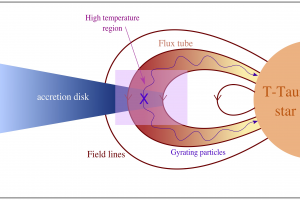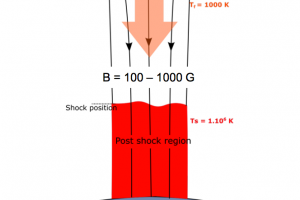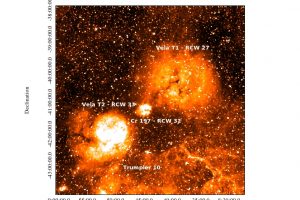MHD simulations of the radio emission from a flaring T Tauri star. The study: “Predicting the time variation of radio emission from MHD simulations of a flaring T-Tauri star” of Waterfall C. O. G. (Jodrell Bank Centre for Astrophysics) recently appeared on MNRAS

T Tauri stars are young low-mass stars (typically younger than 5 million of years), which are surrounded by a protoplanetary disk, e.g. a disk of gas and dust orbiting around the star. The disk material does not reach the central star: the dust component sublimates in the inner disk, where the temperature exceeds 1500 degrees, while the gas disk is truncated
» Read more

